B9U2 Using the Language2(人教版 )[上学期]
文档属性
| 名称 | B9U2 Using the Language2(人教版 )[上学期] |  | |
| 格式 | rar | ||
| 文件大小 | 608.3KB | ||
| 资源类型 | 教案 | ||
| 版本资源 | 人教版(新课程标准) | ||
| 科目 | 英语 | ||
| 更新时间 | 2006-09-12 14:49:00 | ||
图片预览


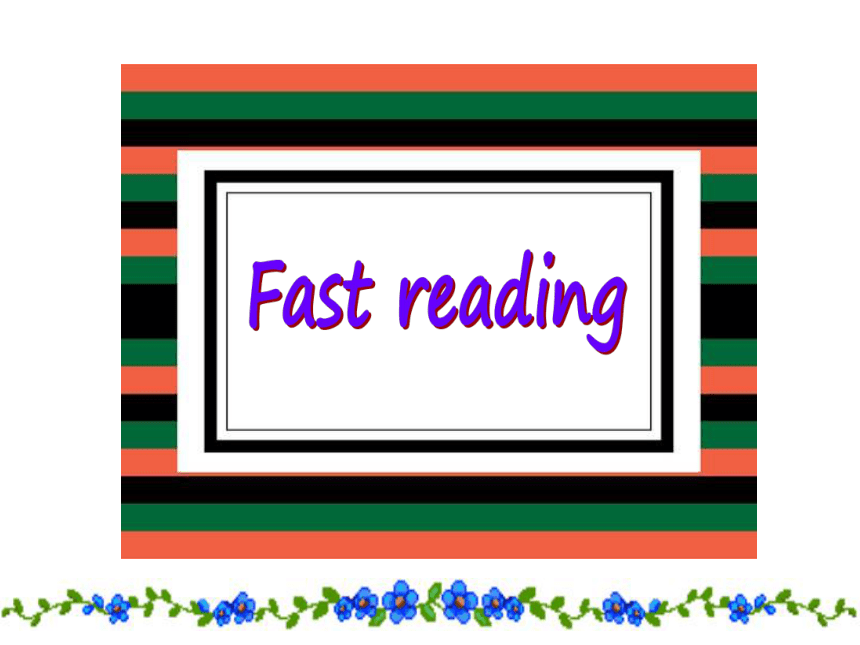
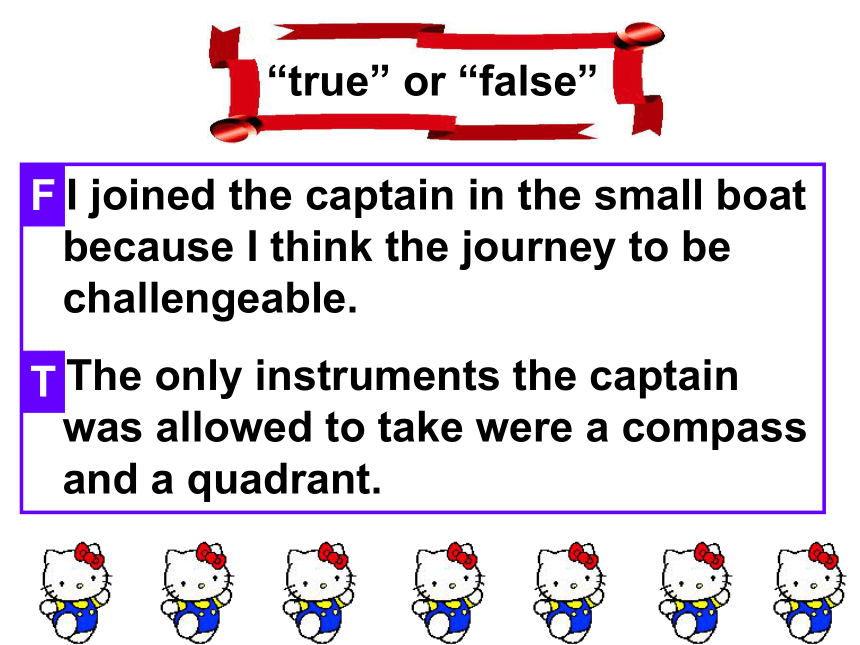

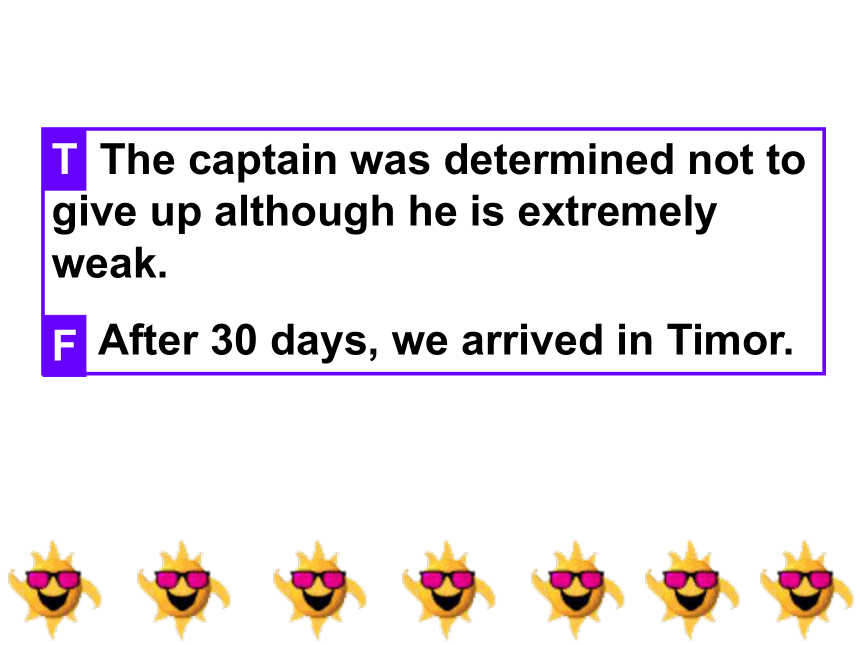
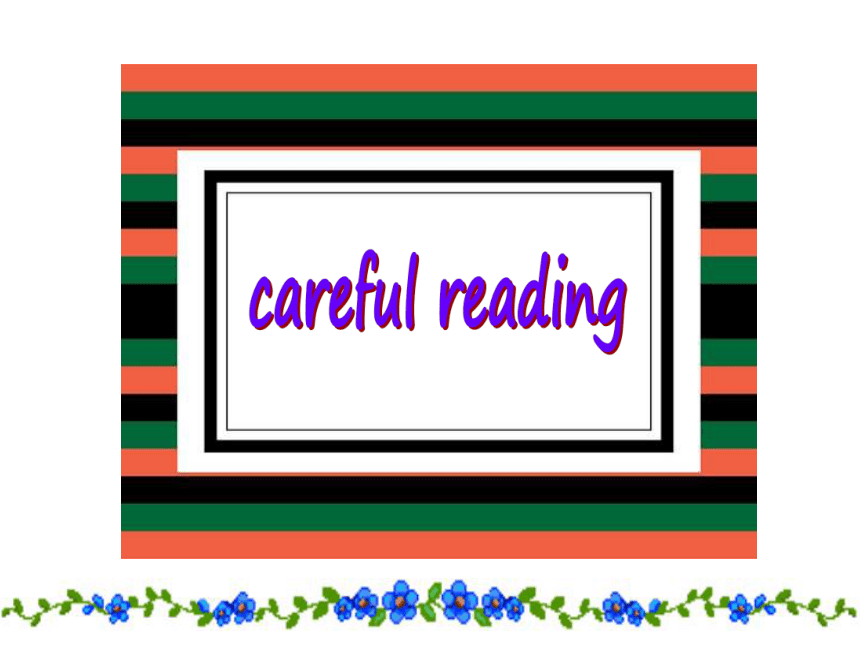
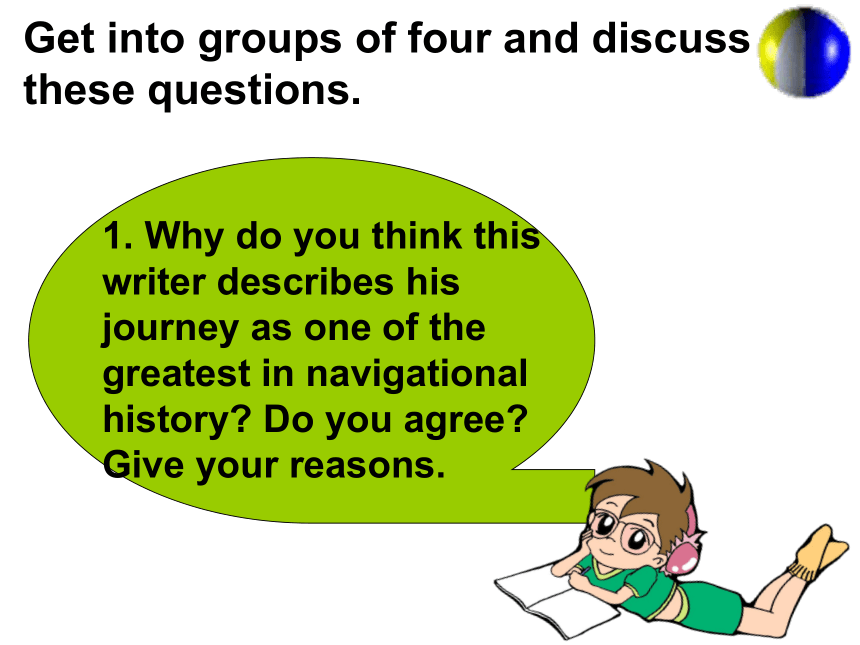

文档简介
课件21张PPT。Using languageThe greatest navigational journeyA lesson in survivalFast reading“true” or “false”I joined the captain in the small boat because I think the journey to be challengeable.
The only instruments the captain was allowed to take were a compass and a quadrant.FT3. We couldn't get a correct reading from the quadrant as the weather was bad.
4. Working out our position took us a great deal of time which made us worried.
5. The extreme lack of water was the hardest to cope with.FFT6. The captain was determined not to give up although he is extremely weak.
7. After 30 days, we arrived in Timor.TFcareful readingGet into groups of four and discuss these questions.1. Why do you think this writer describes his journey as one of the greatest in navigational history? Do you agree? Give your reasons.2. What kind of leadership qualities do you think Captain Bligh showed? Are these the only qualities needed for a good captain?Get into groups of four and discuss these questions.Useful expressionsWhy are you…? Why did you…? Because of … The reason is that ... As he… Now that … He …, so he is ill with fever after the voyage. It is …, so I’m afraid… How could you …? It was due to … It was because… Therefore, … Since he… That’s why….WritingWrite a report to your leader explaining to him why you think Captain Bligh should or should not receive the medal.listening and speakingRead these words and then listen to the tape. Circle those aids that early sailors used to find their way.compass maps fish movements stars weather waves currents clouds rainfall birds other ships mountainsmapsstarscloudswavescurrentsbirdsListen to the tape again and fill in the chart.NorwayWatched birds to find landPacificStudied the waves of the oceanThese are some Viking sailing directions from Norway to Greenland.Sail west but keep to the north of the Shetland Islands so you can hardly see them in good weather. Stay far enough south of the Faroes so that their steep mountains are just halfway up the horizon. Keep south of Iceland so that you cannot see land but just coastal birds. Follow this route and you should reach Greenland.Use the information from the listening to explain these sailing strategies.Vikings used to prefer to sail following the coastline so they could check that they were on the correct route.
Vikings used birds, and natural features like mountains, to direct their ships.Sayings What do they mean?1.“If you can read the ocean, you will never be lost.”Study the waves so that you can read what will happen in the weather or when land is close.What do they mean?2. “Watch for when the sun grows.”The position of the morning sun on the horizon can help you check your course.What do they mean?3. “the stars are the yes of Heaven” “the stars can give you information about your position and can help you “see” where you are.”What do they mean?4. “When the bird flies out to sea, the sea will grow calm.” Birds do not fly out to sea if a storm is coming so a bird flying away from the shore means good weather.
The only instruments the captain was allowed to take were a compass and a quadrant.FT3. We couldn't get a correct reading from the quadrant as the weather was bad.
4. Working out our position took us a great deal of time which made us worried.
5. The extreme lack of water was the hardest to cope with.FFT6. The captain was determined not to give up although he is extremely weak.
7. After 30 days, we arrived in Timor.TFcareful readingGet into groups of four and discuss these questions.1. Why do you think this writer describes his journey as one of the greatest in navigational history? Do you agree? Give your reasons.2. What kind of leadership qualities do you think Captain Bligh showed? Are these the only qualities needed for a good captain?Get into groups of four and discuss these questions.Useful expressionsWhy are you…? Why did you…? Because of … The reason is that ... As he… Now that … He …, so he is ill with fever after the voyage. It is …, so I’m afraid… How could you …? It was due to … It was because… Therefore, … Since he… That’s why….WritingWrite a report to your leader explaining to him why you think Captain Bligh should or should not receive the medal.listening and speakingRead these words and then listen to the tape. Circle those aids that early sailors used to find their way.compass maps fish movements stars weather waves currents clouds rainfall birds other ships mountainsmapsstarscloudswavescurrentsbirdsListen to the tape again and fill in the chart.NorwayWatched birds to find landPacificStudied the waves of the oceanThese are some Viking sailing directions from Norway to Greenland.Sail west but keep to the north of the Shetland Islands so you can hardly see them in good weather. Stay far enough south of the Faroes so that their steep mountains are just halfway up the horizon. Keep south of Iceland so that you cannot see land but just coastal birds. Follow this route and you should reach Greenland.Use the information from the listening to explain these sailing strategies.Vikings used to prefer to sail following the coastline so they could check that they were on the correct route.
Vikings used birds, and natural features like mountains, to direct their ships.Sayings What do they mean?1.“If you can read the ocean, you will never be lost.”Study the waves so that you can read what will happen in the weather or when land is close.What do they mean?2. “Watch for when the sun grows.”The position of the morning sun on the horizon can help you check your course.What do they mean?3. “the stars are the yes of Heaven” “the stars can give you information about your position and can help you “see” where you are.”What do they mean?4. “When the bird flies out to sea, the sea will grow calm.” Birds do not fly out to sea if a storm is coming so a bird flying away from the shore means good weather.
同课章节目录
